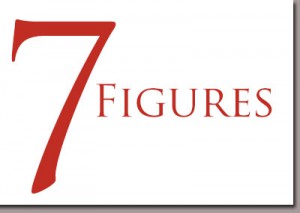 [Note: This is the first post in ‘7 Figures’, a new, occasional series highlighting data and information from a variety of surveys and reports.]
[Note: This is the first post in ‘7 Figures’, a new, occasional series highlighting data and information from a variety of surveys and reports.]
The U.S. Department of Labor recently released data from the Occupational Employment Statistics program, which provides employment and wage estimates by area and by industry for wage and salary workers in hundreds of occupation groups in America. Here are seven figures based on the report:
1. Retail salespersons and cashiers were the occupations with the largest employment in May 2013. These two occupations combined made up nearly 6 percent of total U.S. employment, with employment levels of 4.5 million and 3.3 million, respectively.
2. The number of religious workers in America (71,540) is almost exactly the same as the number of aerospace engineers (71,500). (The mean wages for religious workers ($45,130) is less than half of aerospace engineer ($105,450).)
3. Of the 10 largest occupations, only registered nurses, with an annual mean wage of $68,910, had an average wage above the U.S. all-occupations mean of $22.33 per hour or $46,440 annually.
4. Only three occupations have an average annual pay of less than $19,000 a year: fast food cooks, fast-food servers, and shampooers.
5. Only three occupations have annual median wages in excess of $200,000: Anesthesiologists ($235,070), Surgeons ($233,150), and Obstetricians and gynecologists ($212,570).
6. Five of the 6 largest occupations in the public sector were teaching occupations: elementary
school teachers, except special education; middle school teachers, except special and
career/technical education; secondary school teachers, except special and career/technical
education; teacher assistants; and substitute teachers. Over 75 percent of employment in each of
these occupations was in the public sector, and for each, over 95 percent of their public sector
employment was in local government.
7. Three of the 5 largest occupations in the federal government were specific to the U.S. Postal
Service—postal service mail carriers; postal service mail sorters, processors, and processing – 5 –
machine operators; and postal service clerks—which combined accounted for 19 percent of
federal employment. Also among the largest federal government occupations were registered
nurses, management analysts, compliance officers, and transportation security screeners.

